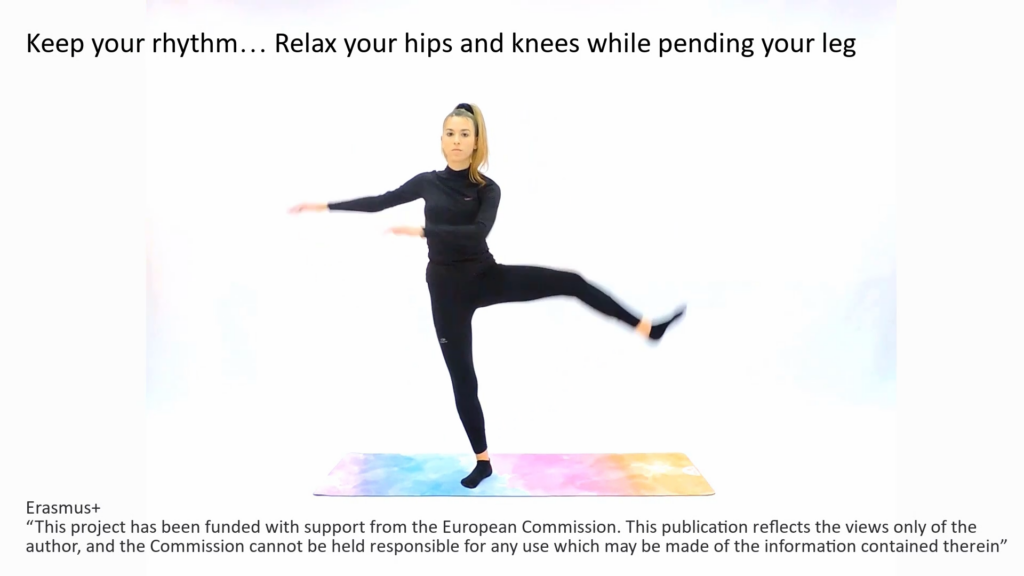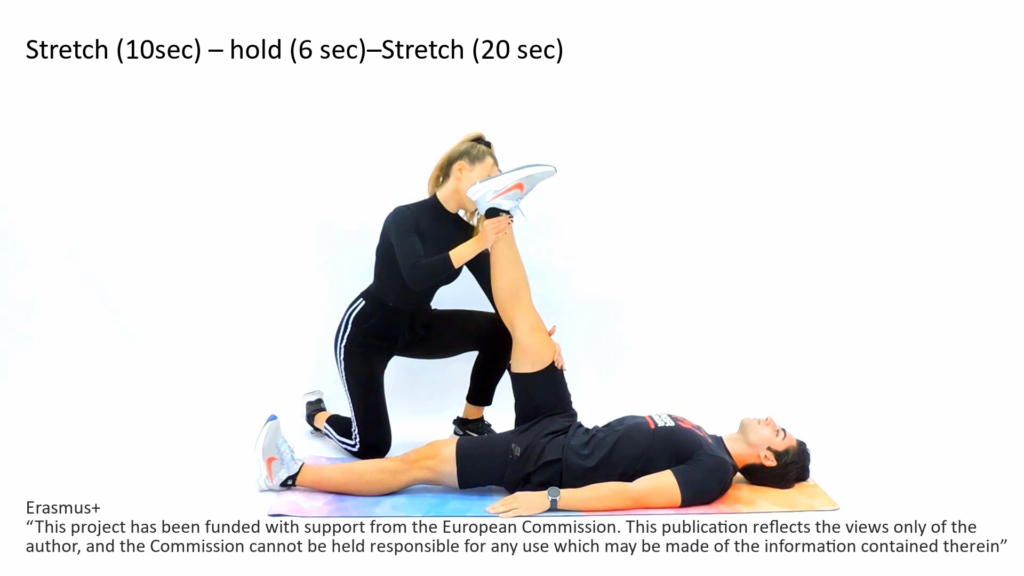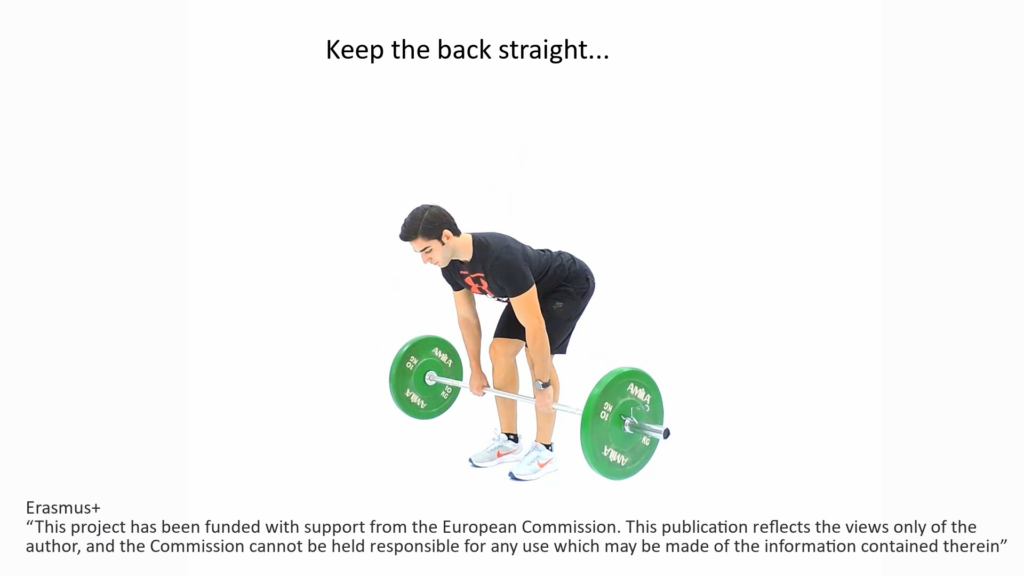SAFE-RUN app
SAFE-RUN app is designed to meet the needs of recreational runners, suffering from different running injuries. As an interactive application it enhances ease of access and flexibility of use providing the user a customized sequence of exercise protocol in video.
If you are a recreational runner aiming to deal with pain related to running, fill in the questionnaire below.
A set of scientific evaluation tools will virtually represent your pain symptoms and then will lead you to the appropriate exercise intervention providing sessions of exercise protocols effective in alleviating pain.
In this way the app gives you tailor made exercise protocols to your profile and needs!
So, go on and fill in the questionnaire!
The great increase in sports athletic events (popular street races, marathons, etc.) over the last 10 years and the geometric increase in the number of participants in Greece and abroad in sports activities during their free time demonstrates the significant interest that exists now in non-athletes for recreational sports such as recreational running. Raising awareness and informing the public of all ages about the benefits of training for health improvement is now widespread, with more and more people involved in sporting activities, whether or not organized – such as a simple daily walk, running or organized in small groups of the region, participating in organized team tournaments at the workplace (see Hellenic Organization for Company Sport and Health HOCSH organized or participated only in 2019 in 5 sporting championships at national or European level) at sporting sports events such as running, cycling, swimming, soccer 5×5 or mass-race as mentioned above.

Next to its beneficial health effects, negative side effects in terms of sports injuries have also soon been recognized (van Mechelen W., 1992). Most running injuries are lower extremity injuries, with a predominance for the knee. About 50 to 75% of all running injuries appear to be overuse injuries due to the constant repetition of the same movement. Recurrence of running injuries is reported in 20 to 70% of the cases. From the epidemiological studies it can be concluded that running injuries lead to a reduction of training or training cessation in about 30 to 90% of all injuries, about 20 to 70% of all injuries lead to medical consultation or medical treatment and 0 to 5% result in absence from work.

Given the limitations of the studies it appears that for the average recreational runner, who is steadily training and who participates in a long distance run every now and then, the overall yearly incidence rate for running injuries varies between 37 and 56%. Depending on the specificity of the group of runners concerned (competitive athletes; average recreational joggers; boys and girls) and on different circumstances these rates vary. If incidence is calculated according to exposure of running time the incidence reported in the literature varies from 2.5 to 12.1 injuries per 1000 hours of running.
Etiological factors associated with running injuries include previous injury, lack of running experience, running to compete and excessive weekly running distance. The association between running injuries and factors such as warm-up and stretching exercises, body height, malalignment, muscular imbalance, restricted range of motion, running frequency, level of performance, stability of running pattern, shoes and inshoe orthoses and running on one side of the road remains unclear or is backed by contradicting or scarce research findings. Significantly not associated with running injuries seem age, gender, body mass index, running hills, running on hard surfaces, participation in other sports, time of the year and time of the day.
This means that the underlying cause of many of these injuries remains in question. Past studies and popular opinion have blamed increased mileage, excess body weight, over-striding, modern running shoes, going barefoot, weak hips, diet, and rough pavement or trails. But most often, studies have found that the best indicator of a future injury is a past one, which, frankly, is not a helpful conclusion for runners hoping not to get hurt.
As mentioned before more and more studies more emphasize that the prevention of sports injuries should more focus on changes of behavior by health education, that’s why experienced academics/researchers in prevention (exercise specialist) and rehabilitation (physical therapist and medical doctor) of sports injuries in collaboration with experienced senior runners (Dro.Me.A racing) and together with manager professionals experienced in organizing company sport events aim to promote health education in recreational athletes. Running injuries’ prevention is therefore an (unfortunately) important related area of study, with practical – day to day- training implications for many individuals. Therefore, it is not a surprise that publications related to training for injury prevention sparked public interest. In specific, researchers at Harvard Medical School and other universities (Davis et al, 2015) decided to look at running injuries, one of the more obvious but surprisingly understudied aspects of running, and to focus their attention, in part, on those rare long-time runners who have never been hurt.
In more detail, they set out to look at pounding, or impact loading, which means the amount of force that we create when we strike the ground. Pounding is, of course, inevitable during a run. But runners with similar body types and running styles can experience wildly different amounts of impact loading, and it hasn’t been clear to what extent these differences directly contribute to injuries. For that reason, Davis and colleagues (2015) recruited 249 female recreational athletes who each ran at least 20 miles a week. They investigated the participants’ strides by having them run over a force plate that recorded the impact of each step. During that time, more than 100 of the runners reported sustaining an injury that was serious enough to require medical attention. Another 40 or so reported minor injuries, while the rest remained uninjured. More remarkably, in the minds of the researchers, 21 of the runners not only did not become injured during the two-year study but also had not had a prior injury. In conclusion, this new study found that a group of runners who had never been hurt landed each footfall more softly than a group who had been injured badly enough to seek medical attention. The takeaway was that a softer footfall appears to reduce the likelihood of injury and it was suggested that runners should take out the earbuds and pay attention to the sound of their footsteps!The take home message was “If you land louder, it’s harder,” Davis said. “It’s work, but you can make your foot-strikes softer.”
The popularity of running continues to increase, which means that the incidence of running-related injuries will probably also continue to increase. As a group of experts who strive to prevent and deal with injured athletes every day through exercise prescription, our aim is to educate those runners, especially the youngers, focusing on changes of their behavior by providing health education. Health education on running injuries will primarily focus on the importance of complete training, the early recognition of symptoms of overuse, and on the provision of training guidelines.
Therefore, having fully comprehended the problem created by the lack of guidance and getting bigger as the number of leisure athletes grows, we want to create solutions with this project by creating an innovative tool that is easy to use and scientifically valid that will be the “companion” of every runner-athlete and exercise specialist.
The second goal of SAFE-RUN project is to organize educational events promoting running injury prevention strategies while providing key prevention techniques for the recreational running athletes and exercise experts (running athletes trainers, athletic trainers, physiotherapists etc).

Objectives of the Project
For the needs of SAFE RUN, we define as target groups the following:
- anyone who runs systematically in order to improve physical health, whoever is exercised with or without the supervision of a qualified trainer.
- All exercise experts who have under their supervision athletes or recreational runners and deal with running injuries
The purpose of the SAFE RUN project is to highlight the problem of inadequate scientific support for trainees-runners in their effort to practice their leisure time. By creating a tool that will help prevent and functionally manage musculoskeletal problems resulting from the lack of the appropriate scientific supervision in the design and implementation of any form of exercise, the project partners will provide safety and efficiency in recreational running while fostering health status and wellbeing.
The project explores the problems and proposes solutions while covering two scientific fields that cooperate with each other and overlap:
1. The scientific area of functional exercise aiming to manage musculoskeletal problems through prevention and treatment
2. The application of Counseling to the runner-user during the exercise execution in order to promote appropriate exercise training by following the appropriate instructions, not the interruption due to health problems.
